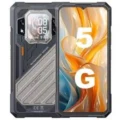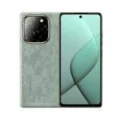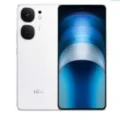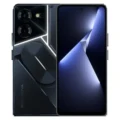Nokia 3.1





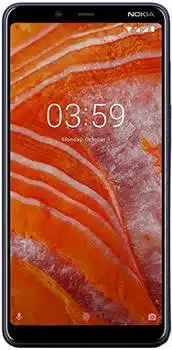
-
: 2/3GB RAM MT6750
-
: 5.2" 720x1440 pixels
-
: 2990mAh
-
: 13MP 1080p
Discover the Nokia 3.1, a sleek and affordable smartphone that seamlessly blends style with performance. Engineered to deliver a satisfying user experience, the Nokia 3.1 boasts a host of features that cater to both efficiency and aesthetics.
The Nokia 3.1 showcases a 5.2-inch HD+ display, providing vibrant visuals and crisp details for an immersive viewing experience. Its slim and compact design not only fits comfortably in your hand but also exudes a modern charm. The phone’s premium aluminum frame adds a touch of sophistication, making it an attractive choice for those who appreciate both form and function.
Equipped with a 13MP rear camera, it enables you to capture life’s moments with clarity and precision. The 8MP front-facing camera is perfect for snapping selfies or engaging in video calls with friends and family. Whether it’s picturesque landscapes or group photos, it ensures you can capture and share your memories effortlessly.
Under the hood, the Nokia 3.1 runs on a powerful octa-core processor, providing smooth performance for everyday tasks and applications. With the Android One platform, you can enjoy a pure and secure Android experience, along with timely updates to the latest features and security patches.
Stay connected for longer with the Nokia 3.1’s robust battery life, ensuring that you can tackle your day without constantly worrying about running out of power. The phone also offers expandable storage, allowing you to keep all your important apps, photos, and files with you wherever you go.
Whether you’re a tech enthusiast or someone seeking a reliable smartphone on a budget, the Nokia 3.1 delivers on all fronts. Elevate your mobile experience with this affordable yet stylish device, where cutting-edge technology meets affordability in perfect harmony.
Specs
Network
| 2G Network GSM 850 / 900 / 1800 / 1900 - SIM 1 & SIM 2 (dual-SIM) CDMA 800 / 1900 |
GSM 850 / 900 / 1800 / 1900 - SIM 1 & SIM 2 GSM 900 / 1800 - India |
| 3G Network |
HSDPA 850 / 900 / 2100 - APAC, EMEA, India HSDPA 850 / 900 / 1700(AWS) / 1900 / 2100 - LATAM, NAM |
| 4G Network |
1, 3, 5, 7, 8, 20, 38, 40 - APAC, EMEA 1, 2, 3, 4, 5, 7, 8, 12, 17, 28, 38, 40 - LATAM, NAM 1, 3, 5, 40, 41 - India |
| Speed |
HSPA 42.2/5.76 Mbps, LTE Cat4 150/50 Mbps |
LAUNCH
| Announced | May, 2025 |
| Status |
Available. Released 2018, May |
BODY
| Dimensions | 146.3 x 68.7 x 8.7 mm (5.76 x 2.70 x 0.34 in) |
| Weight | 138.3 g (4.87 oz) |
| Build | Glass front (Gorilla Glass 3), plastic back, aluminum frame |
| SIMs SIM (Subscriber Identity Module) is a small card that contains mobile network subscriber's account information. This allows the phone using the card to attach to a mobile network. The SIM card is most commonly associated with GSM and UMTS mobile networks. Moving a SIM card from one phone to another allows a subscriber to switch mobile phones without having to contact their mobile network carrier. SIM cards can also be used by a phone to store limited amounts of data, such as phone numbers and text messages. |
Dual SIM (Nano-SIM, dual stand-by) |
Display
| Display Type Display Technology => A number of display technologies and types used in mobile phones => TFT (Thin Film Transistor), IPS (In-Place Switching), OLED (Organic Light Emitting Diode), AMOLED (Active-Matrix Organic Light-Emitting Diode), Super AMOLED (an even advanced version of AMOLED), Resistive Touchscreen (Resistive touchscreens contain two layer of conductive material with a very small gap between them which acts as a resistance), Capacitive Touchsceen (Capacitive touchscreen technology consists of a layer of glass coated with a transparent conductor) | IPS LCD |
| Size | 5.2 inches, 69.8 cm2 (~69.4% screen-to-body ratio) |
| Resolution | 720 x 1440 pixels, 18:9 ratio (~310 ppi density) |
| Protection Display Protection => Gorilla Glass is a special alkali-aluminosilicate glass shield with exceptional damage resistance that helps protect mobile displays from scratches, drops, and bumps of everyday use, It is always better to go for a smartphone with Gorilla Glass for that added protection and peace of mind. | Corning Gorilla Glass 3 |
PLATFORM
| Operating System OS => Every computer system run on a base software called Operating System (OS). Operating System controls all basic operations of the computer (such as smartphone, PDAs, tablet computers and other handheld devices). The Operating System allows the user to install and run third party applications (apps), apps are used to add new functionality to the device. | Android 8.0 (Oreo), upgradable to Android 10, Android One |
| Chipset Chipset is a group of integrated circuits designed to perform one or a more dedicated functions, often with real time computing constraints, Popular smartphones are equipped with more advanced embedded chipsets that can do many different tasks depending on their programming. | Mediatek MT6750 (28 nm) |
| CPU CPU (Central Processing Unit) mostly known as processors, CPU processes instructions in order to carry out certain functions that make your device operate properly. Processors are often described as the brain of computers, smartphones and tablets, Smartphones and tablets rely on processors to carry out their every task, Processors are an incredibly important factor in selecting any type of computing device, including your smartphone. | Octa-core (4x1.5 GHz Cortex-A53 & 4x1.0 GHz Cortex-A53) |
| GPU GPU (Graphics Processing Unit) is a single-chip processor designed to rapidly manipulate and alter memory to accelerate the creation of images in a frame buffer intended for output to a display, This includes things such as lighting effects, object transformations, and 3D motion. | Mali-T860MP2 |
MEMORY
| Card Slot Memory Card Slot is a special slot for inserting a memory card. Memory cards allow you to expand the phone's built-in memory, A memory card (sometimes called a flash memory card or a storage card) is a small storage medium used to store data such as text, pictures, audio, and video, for use on small, portable or remote computing devices such as mobile phones, mp3 players, digital cameras. | microSDXC (dedicated slot) |
| Internal | 16GB 2GB RAM, 32GB 2GB RAM, 32GB 3GB RAM |
MAIN CAMERA
| Cameras Specs Today’s smartphones come equipped with a very comprehensive set of camera related specifications. Our smartphone, for many of us, has become our primary camera due to it being the one we always have with us. |
13 MP, f/2.0, AF |
| Video | 1080p@30fps |
| Camera Features |
LED flash, HDR, panorama |
SELFIE CAMERA
| Cameras Specs Today’s smartphones come equipped with a very comprehensive set of camera related specifications. Our smartphone, for many of us, has become our primary camera due to it being the one we always have with us. |
8 MP, f/2.0 |
| Features |
HDR |
| Video | 720p@30fps |
SOUND
| Loudspeaker | Yes |
| 3.5mm jack |
Yes |
COMMS
| WLAN |
Wi-Fi 802.11 a/b/g/n, dual-band, Wi-Fi Direct |
| Positioning |
GPS, GLONASS |
| Bluetooth Bluetooth is a wireless communications technology for exchanging data between mobile phones, headsets, computers and other network devices over short distances without wires, Bluetooth technology was primarily designed to support simple wireless networking of personal consumer devices. | 4.2, A2DP, LE |
| Infrared Infrared connectivity is an old wireless technology used to connect two electronic devices. It uses a beam of infrared light to transmit information and so requires direct line of sight and operates only at close range. | |
| USB | microUSB 2.0, OTG |
| NFC NFC (Near field communication) is a set of standards for smartphones and similar devices to establish peer-to-peer radio communications with each other by touching them together or bringing them into proximity, usually no more than a few inches. | |
| Radio |
Features
| Sensors Sensors are electronic components that detects and responds to some type of input from the physical environment. The specific input could be light, heat, motion, moisture, pressure and location, The output is generally a signal that is converted to use in computing systems, a location sensor, such as a GPS receiver is able to detect current location of your electronic device. |
Accelerometer, gyro, proximity, compass |
BATTERY
| Battery Type Battery Type => Cell phones run on various kinds of batteries depending on the manufacturer, phone size or shape and features. There are basically four types of cell phone batteries => Lithium Polymer, Lithium Ion, Nickel Metal Hydride and Nickel Cadmium. | Li-Ion (Lithium Ion) |
| Capacity Battery Capacity is a measure (typically in Amp-hr) of the charge stored by the battery, and is determined by the mass of active material contained in the battery. The battery capacity represents the maximum amount of energy that can be extracted from the battery under certain conditions. | 2990 mAh, |
| Placement | non-removable |
MISC
| Colors |
Blue/Copper, Black/Chrome, White/Iron |
| Model | TA-1049, TA-1057, TA-1063, TA-1070, TA-1074 |
| SAR EU Each GSM handset has a radio transmitter and receiver in order to operate in the wireless GSM network. That transceiver is manufactured so that when used next to the ear and when worn on the belt, it won't exceed the limits for exposure to radio frequency energy set by the authorities. The authorities in question here are the Federal Communications Commission (FCC) of the U.S. Government, Industry Canada of the Canadian Government (IC), and the Council of the European Union. |
0.64 W/kg (head) 1.79 W/kg (body) |
| Price | About 200 EUR |
TESTS
| Performance |
GeekBench: 2624 (v4.4) GFXBench: 2fps (ES 3.1 onscreen) |
| Display | Contrast ratio: 1490:1 (nominal), 2.837 (sunlight) |
| Loudspeaker | Voice 70dB / Noise 70dB / Ring 78dB |
| Battery (old) | Endurance rating 56h |
Reviews
Disclaimer Note
We strive to maintain accurate and up-to-date content on our website for general information purposes only. Please refrain from using the material for business, legal, or any other decisions.






